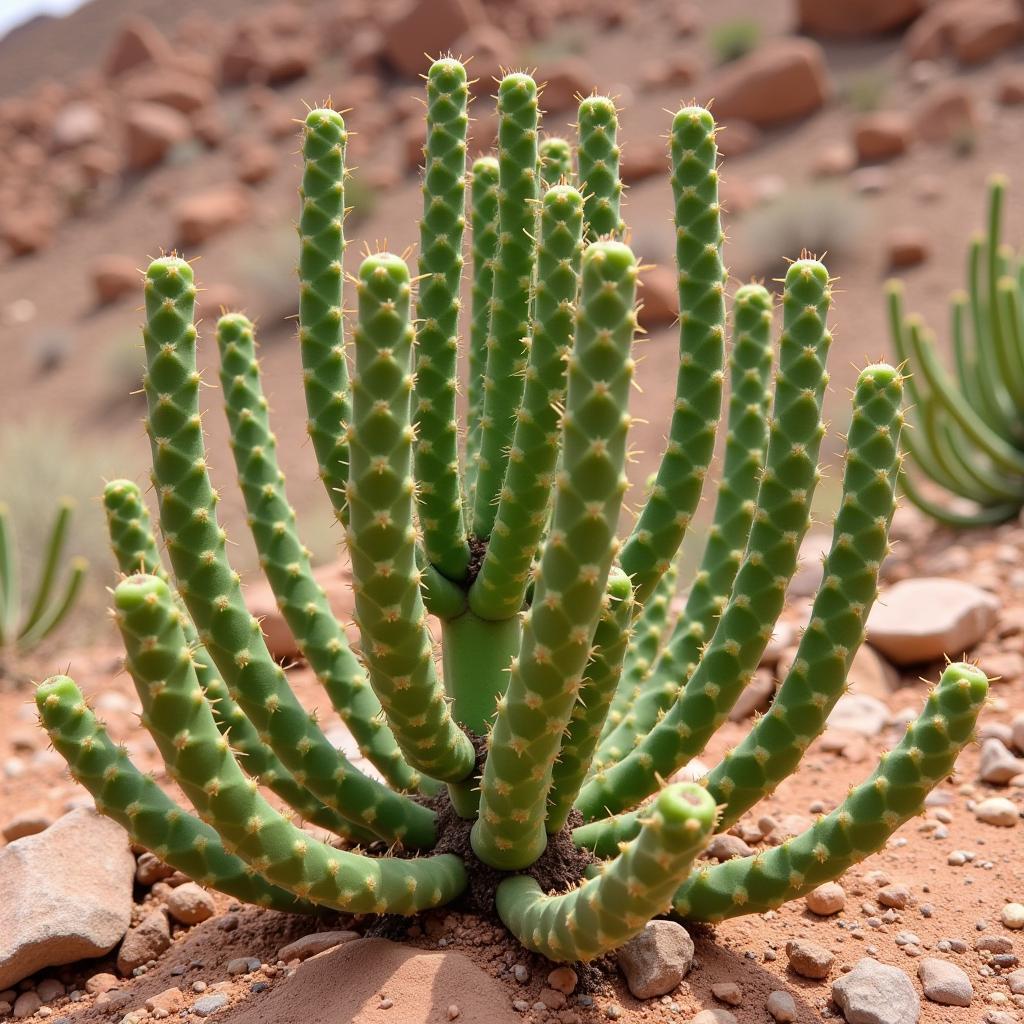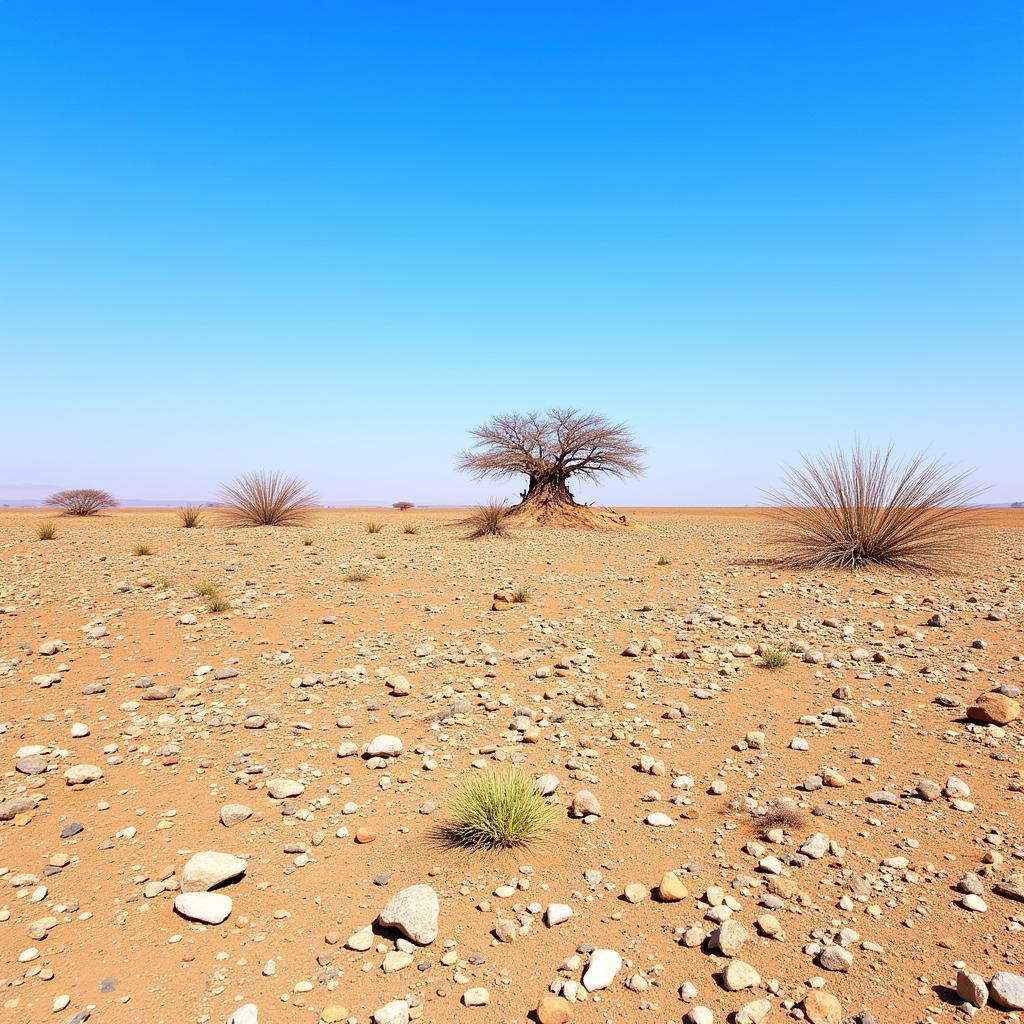Unveiling the African Candelabra
The African Candelabra, a striking symbol of African flora, captivates with its unique form and intriguing history. From its diverse species to its cultural significance, this article explores the fascinating world of the African candelabra and its place within the vibrant tapestry of African Life. african candlebra Let’s embark on a journey to uncover the secrets of this remarkable plant.
What is an African Candelabra?
The term “African candelabra” can refer to several different plant species, all sharing a similar branching structure that resembles a multi-armed candelabrum. This distinctive shape has earned them this evocative name, sparking curiosity and inspiring awe. These plants, often succulents or cacti, have adapted to thrive in arid and semi-arid regions of Africa, displaying remarkable resilience and beauty in harsh environments. Some are small and shrub-like, while others can grow into towering giants, dominating the landscape with their imposing presence.
 Euphorbia abyssinica – A Majestic Example of an African Candelabra
Euphorbia abyssinica – A Majestic Example of an African Candelabra
Exploring the Diversity of African Candelabra
Several plant species fall under the umbrella term “African candelabra.” Perhaps the most well-known is Euphorbia abyssinica, a large succulent tree native to Ethiopia and Eritrea. Its segmented, upright branches create the classic candelabra form. Other species, such as Euphorbia ingens and Euphorbia candelabrum, contribute to the rich diversity of these fascinating plants. Each species possesses unique characteristics, from the intricate patterns on their stems to their varying sizes and growth habits. Understanding this diversity helps us appreciate the complex beauty of the African flora.
The Cultural Significance of the African Candelabra
Beyond its botanical intrigue, the African candelabra also holds cultural significance in various African communities. Traditionally, some communities have utilized parts of these plants for medicinal purposes, while others have incorporated them into local folklore and beliefs. For example, some cultures view the imposing form of the candelabra tree as a symbol of strength and resilience, connecting it to ancestral spirits and the power of nature.
 Traditional Uses of the African Candelabra Plant
Traditional Uses of the African Candelabra Plant
How to Care for an African Candelabra Plant
For those fascinated by the African candelabra and interested in cultivating it, understanding its specific needs is crucial. These plants thrive in well-draining soil and require plenty of sunlight. Overwatering can be detrimental, as their succulent nature allows them to store water efficiently. african candelabra tree name in malayalam With proper care, these unique plants can add a touch of African charm to any collection.
African Candelabra: Frequently Asked Questions
Is the African candelabra a cactus? While often mistaken for cacti, most African candelabra plants belong to the Euphorbia genus, which are succulents.
What is the ideal temperature for an African candelabra? They prefer warm temperatures and should be protected from frost.
How often should I water an African candelabra? Water sparingly, allowing the soil to dry out completely between waterings.
Are African candelabra plants poisonous? Many species contain a milky sap that can be irritating to the skin and eyes.
Can I grow an African candelabra indoors? Yes, provided they receive adequate sunlight.
Dr. Abimbola Oladeji, a renowned botanist specializing in African flora, notes, “The African candelabra is a testament to the remarkable adaptability of plants in challenging environments. Their unique form and resilience make them truly captivating.”
 African Candelabra in its Natural Habitat
African Candelabra in its Natural Habitat
Professor Khadija Mbowe, an ethnobotanist from Tanzania, adds, “The cultural significance of these plants underscores the deep connection between people and nature in Africa.” african cactus Their presence in traditional practices speaks to their importance within local communities.
The African candelabra, with its striking form and rich cultural significance, offers a fascinating glimpse into the diverse world of African flora. african grasslamds are called ans Whether admired for its beauty, studied for its botanical properties, or revered for its cultural significance, the African candelabra continues to captivate and inspire. For assistance, contact us at +255768904061, kaka.mag@gmail.com, or visit us in Mbarali DC Mawindi, Kangaga, Tanzania. Our customer service team is available 24/7.
